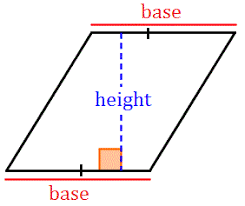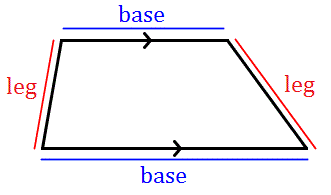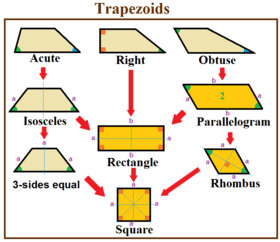Question #02bfc
1 Answer
As explained
Explanation:
In parallelogram, opposite sides are parallel and equal.
In trapezoids at least one pair of opposite sides are parallel.
Hence a parallelogram can never be a trapezoid.
It is important to note that all parallelograms are trapezoids, however.
Hence area of a trapezoid is
Parallelogram

Trapezoid

Special cases :

A right trapezoid (also called right-angled trapezoid) has two adjacent right angles.[6] Right trapezoids are used in the trapezoidal rule for estimating areas under a curve.
An acute trapezoid has two adjacent acute angles on its longer base edge, while an obtuse trapezoid has one acute and one obtuse angle on each base.
An isosceles trapezoid is a trapezoid where the sides (legs) have the same length, and the base angles have the same measure. It has reflection symmetry. This is possible for acute or right trapezoids.
A parallelogram is a trapezoid with two pairs of parallel sides. A parallelogram has central 2-fold rotational symmetry (or point reflection symmetry). It is possible for obtuse or right trapezoids.
A tangential trapezoid is a trapezoid that has an incircle.
A Saccheri quadrilateral is similar to a trapezoid in the hyperbolic plane, with two adjacent right angles, while it is a rectangle in the Euclidean plane. A Lambert quadrilateral in the hyperbolic plane has 3 right angles.

